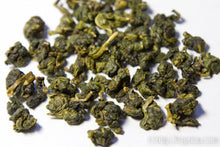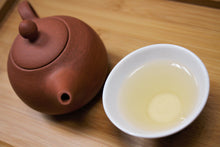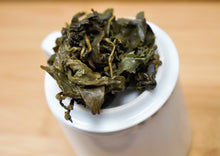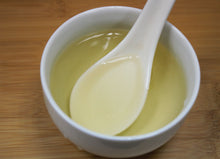Dong Ding Oolong is one of the famous Taiwan oolong.
Tea is made without baking. It gives an identical sweet floral note with a hint of refreshing fresh fruity note with a rich taste on palate.
What is the difference of premium Dong Ding Oolong?
It is not bitter, but sweet. It is surprisingly economical as you can brew more than 6 times: with 3g of tea leaf (one teaspoon), you can brew up to 1 liter of tea!
Customers who have tried our tea have told us that they were surprised for the tender, yet strong flowery aroma. In addition, it gives a very mellow and thick taste with a sweet after taste.
It is Dong Ding Oolong Produced at Dong Ding Mountain
In Taiwan, majority of Dong Ding Oolong is produced not at Dong Ding Mountain, but everywhere. But we only obtain our Dong Ding Oolong tea that is produced only at Dong Ding Mountain. In addition, we select the winter tea that is known as the best high mountain tea.
Good for Relaxing
The mellow and sweet taste of HOJO's Dong Ding Oolong is suitable for all occasions. It is also good for those who have gastronomical problems (weak stomach).
History and Culture
Dong Ding is the name of the mountain which is located in the center of Taiwan called Nantou. The name of Dong Ding derived from a story: the path to the peak of this mountain used to be very slippery and climbers needed to conserve their strength on their toes to hike this mountain; in Chinese that is called "Dong Jiao Jian" (?脚尖) and thus derives the origin of the name Dong Ding.
About 150 years ago, the oolong cultivar was brought to Dong Ding Mountain from Wuyi, Fujian, China. Initially, the name of Dong Ding Oolong meant for the tea produced around Dong Ding Mountain. But when its fame and demand increased, oolong teas produced in other areas as well were also called Dong Ding Oolong as long as they followed the Dong Ding traditional manufacturing process. Nowadays there are some tea cultivators who even roast low grade tea and export it as Dong Ding Oolong.
Production Area
HOJO's Dong Ding Oolong is produced exactly at the Dong Ding Mountain. Unfortunately, this oolong tea, produced at Dong Ding Mountain is getting very rare nowadays on account to its increasing demand and reputation. Many tea cultivators try to produce it at a lower cost and in larger volume which is more than that produced at the tea garden at Dong Ding Mountain. It is rather difficult to find genuine Dong Ding Oolong that is from Dong Ding Mountain. In Taiwan, people also start recognizing that Dong Ding Oolong = Type of Tea.

Dong Ding Mountain

Dong Ding Mountain is not a very high mountain. But it is steep and always covered by fog.
However we only want to introduce the genuine Dong Ding Oolong. Dong Ding Mountain is not only famous for its name, but also its environment and weather is suitable for high grade tea. The altitude of this mountain is not that high which is at around 1000m plus. The secret of Dong Ding Mountain is that it always produces identical quality due to its weather and soil condition. The tea garden gets very strong sunshine in the morning, but it is completely covered by fog in the afternoon. In addition, the environment is very windy, and the soil condition is less rich in nutrition. This severe environment causes the tea leaves to accumulate a lot of substances and leaving it no chance to consume these substances. That's the reason tea why tea produced at Dong Ding Mountain gives a very strong flavor and sweet after taste. You can easily recognize the difference once you've taste our tea.
The sweet flavor and mellow taste is the identical characteristics of Dong Ding Oolong produced at Dong Ding Mountain. In addition, our Dong Ding Oolong is grown at a non-pesticide tea garden
3. Cultivar and Plucking
Our Dong Ding Oolong is produced from Qing-Xin Oolong (青心烏龍種). This is the cultivars traditionally used for Dong Ding Oolong that gives a very refreshing taste.
Tea grown at organic garden appears to be less active and less productivity as tea gets less nutrition and pesticide as compared to the ordinary tea garden. As the identical characteristics, tea leaf turns into yellow color and sweetness in flavor and taste is outstanding.
Plucking is carried out by hand. 3 to 4 leaves including a bud is carefully plucked by hand. Plucking is carried out in Spring, Summer, Autumn and Winter. The best quality is produced either from Spring or Winter.
4. Processing
Sunshine Withering
After plucking, tea leaves are spread over the ground under the natural sunshine. It is called Sunshine Withering. Usually clouded weather is ideal to grow this tea in order to avoid excess damage on tea leaves. If the sunny weather continues, a black cloth is used to cover the tea leaves to block out the harsh rays of sunshine. With sunshine withering, moisture inside the tea leaf gets evaporated and fermentation is moderately triggered. The tea leaf will gradually start releasing a refreshing aroma.
Indoor Withering
The method of fermentation for oolong tea is completely different from that of black tea. After the sunshine withering is completed, tea leaves are conveyed into the factory and spread over a sheet. If tea leaves are rich in moisture, they are spread into a thin layer in order to increase the evaporation process. The tea leaves are then tossed onto a bamboo tray. This agitation and tossing, causes friction which in turn causes the tea leaves to start fermentation. The tray is then placed on a rack and these processes are repeated over and over again. This is what is called fermentation. Tea leaves gets oxidation mediated by the oxidation enzyme when the tea leaves get bruised.
Once entering the fermentation room, you might get surprised with its fragrance. You feel as if you are in a flower garden. Subsequently tea leaves are rotated in a bamboo drum. The tea leaves are lifted and dropped several times. Gradually the edge of tea leaves get damaged and further fermentation takes place. Tea leaves are again spread over the bamboo tray and the same process is repeated over and over again.
Once tea leaves get sufficient fermentation, it starts generating a flowery fragrance. Tea that is processed by a fine tea master is easily distinguishable. The original shape is maintained without any damage done to the tea leaves and only the edge of tea leaves are found to be red in color. This indicates that the tea leaves were successfully semi-fermented and the quality is far different from the tea leaves which have a reddish appearance at the center part of the leaf. Once the tea master finds that fermentation is sufficiently achieved, the tea is then sent for heat treatment in order to arrest further fermentation process. If this is not carried out swiftly, the tea leaves will keep on fermenting and it will finally turn into black tea.
The number of rotation and timing of fermentation is judged based on the moisture content, flavor and color. This decision requires top-notch experienced tea technicians which affects the quality of tea tremendously. All technicians follow the instruction of a tea master. In order to get good quality tea, we need to pick out an excellent tea master.
Rolling
At this stage, tea is fermented and giving an identical character of Dong Ding Oolong. However tea leave has not been damaged or bruised except for its edge. Without physical damage on tea leaf, it is difficult to "brew". On the other hand, conducting the rolling process as black tea that tea leaf is twisted tautly under the strong pressure, tea leaf will be over damaged and get astringent and harsh in taste. In addition, excessive damage of leaf will expose constituent to the oxygen and cause unwanted oxidation that will also affect to the taste and flavor. Therefore the very unique rolling process called "Bag rolling" is used for oolong tea. Literary tea leaf is wrapped in cloth and rolled. Therefore, tea leaves are twisted just right with the right amount of pressure applied.
While the tea leaves are still warm and soft, it is quickly wrapped in cloth bag. About 10-20kg of tea leaf is wrapped and it is made into the size of about a basket ball. Then the end of cloth is mechanically twisted by machine in order to squeeze it into a very solid ball. Finally it becomes as solid as a stone ball and as a result the tea leaves are compressed very tightly.
Then, the cloth ball is clamped between disks at the top and bottom. The top disk does not move while the bottom disk rotate and tea gets further pressure through the motion. After the rolling process is conducted for a while, the bag is opened and the tea leaves are taken out and reheated again in a rotating drum. This is necessary as once the tea leaves cool down, it becomes crispy and easily crushed. This series of processes are repeated several times until it is well rolled.
The tea leaves are gradually tighten and become round in shape. High grade tea is usually very solid and it appears to be dark and shiny as the juice of the tea leaf is squeezed and hardens on the surface of the leaf.
The same sequence is repeated over and over again. The parameter is varied depending on the condition of leaf such as moisture content. It is important to feel the condition of tea leaf and apply the suitable method of process which is judge expertly by the tea master.
After this rolling process is completed, the tea leaves are dried and this will reduce the moisture content down to 5%.









